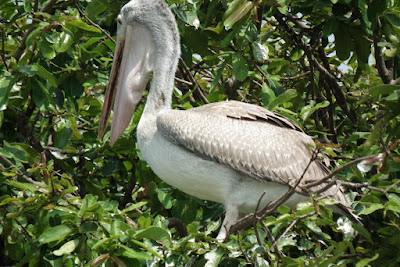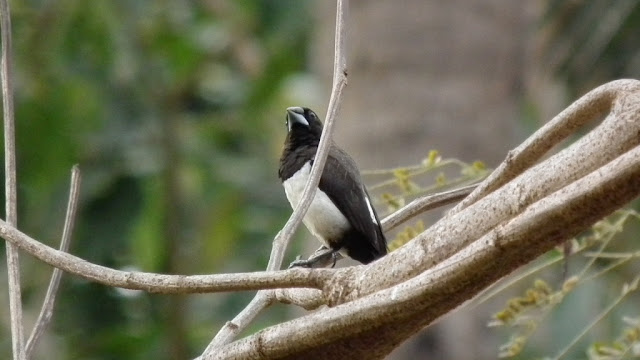After a long and steep climb over the steps leading to the caves, at the place where the stalls and restaurants come to an end, there is a rough and dusty pathway which further leads to the village of Rajbunder, in the interior of the Island. From here, one can catch a glimpse of the pier where ferries from Mumbai arrive and part of the steps leading up to the caves. I had expected the Elephanta Island to be spared of the scourge of plastic. But, that is not the case. All along this path are dumped large quantities of garbage and plastic waste, including water and soft drink bottles, plastic glasses and the like. It was the same in the vicinity of the village.
This shows that we (Indians) are just not bothered about the environment and the damage we are causing to Mother Nature.
As you proceed along this path, away from the noisy stalls and visitors, it becomes quieter and you can spot various bird species, like the Common Iora, Yellow-throated Sparrow, Minivet, Pariah and Brahminy Kites. We were lucky to also spot the Grey Hornbill.
The Iora has the most unique and exquisite calls of all birds, a melodious whistling tone, which words can hardly describe. You have to listen to it to really appreciate how great it sounds.
About a kilometer away is a small botanical park, not formally opened yet. You can however, enter the park and walk along the embankment of a pond and spot several ducks and lapwings.
Considering that the island of 1600 residents has more than 500,000 annual visitors, and being home to a world heritage site, the Elephanta Caves, it is hoped that the Maharashtra government offers better facilities to the islanders to deal with the problems of garbage disposal, sanitation and electricity supply (although arrangements were made for providing basic solar electricity to the village).
Until that happens, it is up to the visitors to act responsibly and avoid further degradation of the island.We can do our bit by reducing usage of plastic.

















